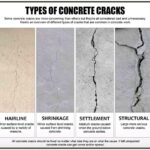Shielding Coho Salmon from Tire Pollution via Permeable Pavements
A study from Washington State University suggests that the porous structure of permeable pavements could serve as a safeguard for coho salmon by intercepting tire wear particles and associated contaminants from entering stormwater runoff.
The research revealed that four varieties of permeable pavements function as large-scale filters, retaining over 96% of tire particle mass applied to them. Additionally, they captured various tire-related chemicals, resulting in an average reduction of 68% in 6PPD-quinone, a harmful contaminant known to harm coho salmon in urban waterways. These findings were published in the journal Science of the Total Environment.
Lead author Chelsea Mitchell, who recently completed a PhD in environmental and natural resource sciences at WSU, highlighted the growing challenges faced by existing stormwater management systems, particularly in the context of climate change and urban expansion. Mitchell stated, “Permeable pavements offer a promising avenue for green stormwater infrastructure as they can treat this form of pollution at its source, rather than downstream.”
In a previous study conducted in 2020, researchers at the Washington Stormwater Center, led by WSU and University of Washington scientists, identified that 6PPD, a chemical present in tires, undergoes transformation into 6PPD-quinone upon exposure to ozone or sunlight. Even in small concentrations, 6PPD-quinone poses a threat to salmon.
In the latest study, WSU scientists, under the guidance of Ani Jayakaran, a professor at WSU’s Puyallup Research and Extension Center, conducted experiments in an active parking lot at the School of Industrial Design, Engineering, and Art in Tacoma, Washington. They tested four types of permeable pavements made of asphalt or concrete, which were developed in collaboration with Boeing, Tacoma Public Schools, and the City of Tacoma, with Boeing providing research funding.
The researchers simulated rain events by flushing water through the pavements and measured the baseline levels of pollutants. They then deposited ground-up tire tread across a designated area and simulated another rainstorm to gauge the retention of the particles and associated chemicals. A subsequent water flushing experiment helped assess the likelihood of continued leaching of 6PPD-quinone and other chemicals from retained tire particles during future rain events.
Jayakaran, a co-author of the study, explained, “Permeable pavements play a crucial role in managing 6PPD-quinone and its source—tire wear particles. The hydrophobic nature of 6PPD-quinone suggests that the chemical is being absorbed into the internal surfaces of the pavement system.”
However, despite their efficacy, permeable pavements face challenges due to their inherent weakness compared to traditional pavements, making them less resilient to heavy traffic. Previous research from WSU’s Voiland College of Engineering and Architecture has explored reinforcing permeable pavements using carbon fiber composite scraps derived from Boeing airplane wings.
The potential impact of this research is significant, not only for the preservation of salmon, which holds cultural importance for Native nations and upholds their treaty rights, but also for human health. Jayakaran noted, “Tire particles can become airborne and potentially enter the human body, posing health risks, especially in communities near busy roads.”
While the study findings are promising, Mitchell and Jayakaran underscore the need for further testing. They acknowledge that widespread adoption of this innovative infrastructure presents challenges, particularly regarding the cost of replacing existing roads and parking lots.
Jayakaran concluded, “While permeable pavements are not a universal solution for all roadways, our research provides a hopeful direction for the future management of 6PPD-quinone and tire wear particles, indicating the potential for significant positive impact.”
Source: here







